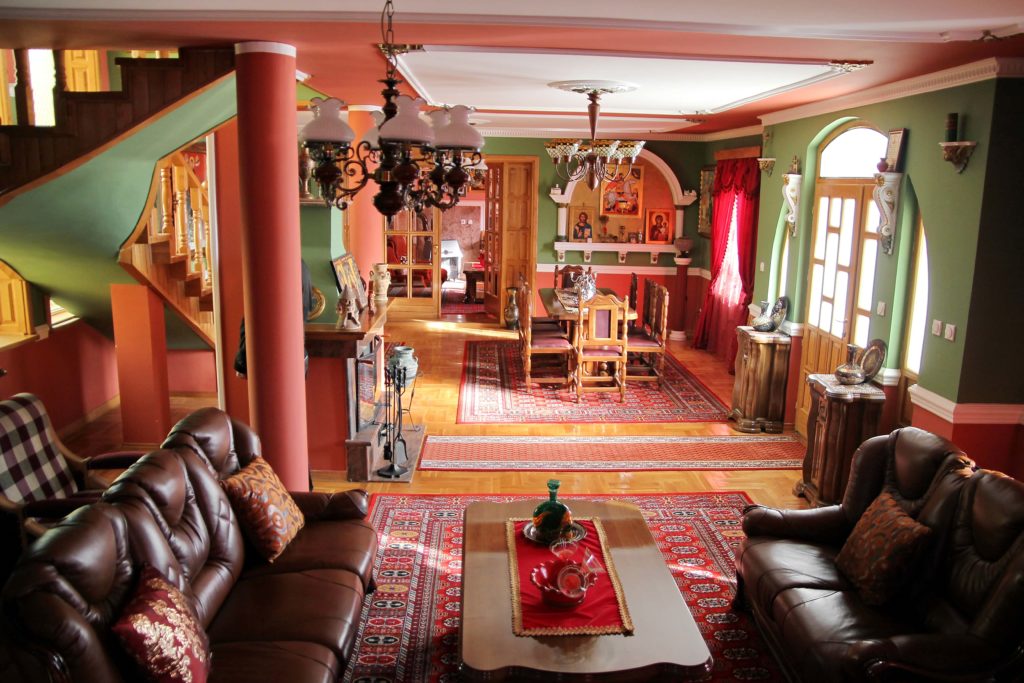
If the 2010s could be summarized by plant-based Instagram feeds, Marie Kondo, and Scandinavian-chic design, then the 2020s represent something entirely different—a decade filled with bright colors, extravagant decor, and a maximalist’s dream come true.
As a self-proclaimed minimalist and eco-minded individual, I’ve been quick to pass judgment on the growing Gen Z maximalist trend—viewing it not just as a fad, but as something inherently incongruent with Gen Z’s emphasis on sustainability and climate justice. I struggled to see how more could be better for an environment that is already straining against human greed and mindless consumption, and in dire need of humans to do less.
I realize now that my judgment was wrong.
In a TikTok that starts with the question, “Name a capitalist scam we’ve all been conditioned to believe is totally okay,” TikToker, @Interstellar_Isabellar, goes on to explain how minimalism has been ingrained as the “golden standard” of modern decor in contrast to the deep historical significance of complex ornamental design.
Throughout her TikToks, she delves into minimalism’s culture erasure and fascist roots, along with how capitalism turned minimalist design into a money-making trend to sell newer and more expensive items.
Other TikTokers like @calebsaysthings and @stevienickscoven call minimalism something only available for “hot rich people” and an HGTV scam. Of those who base their careers on a minimalist lifestyle, it should be noted that the majority are white and come from some degree of wealth or financial security.
Joshua Fields Millburn and Ryan Nicodemus, creators of The Minimalists, are quick to mention their six-figure salary background as a justification for achieving it all and choosing less instead. Francine Jay, writer of The Joy of Less, notes her path to minimalism came after the opportunity to travel and desiring to travel lightly instead.
While I believe each author mentioned above brings helpful and valuable insight, it’s important to recognize that their stories are not the norm and cannot, therefore, reflect what actually works for those who are unable to achieve that same level of financial freedom and flexibility.
Like the millennial generation, Gen Z is on track for financial struggles, fighting against high unemployment rates in 2020 and fewer returns on stocks and investments, according to Business Insider. For this burgeoning generation, maximalism means affordability and utility—saving items to repurpose rather than spending excess money on an item that may go out of style in two to three years. Rather than buying a $200 dress brand new, Gen Zs choose to thrift a $2 dress found at a local thrift shop instead. Need a candle? Luckily, they saved that old, glass yogurt container and can now repurpose it as a jar to make a DIY candle for you instead.
Beyond saving money, maximalism also encourages saving the environment through smart secondhand purchases.
As written by Piper Samuels in DailyCal.org, “Despite encouraging consumers to purchase fewer items, the minimalist aesthetic’s anti-environmental plight is its reliance on new items. One simply cannot purchase a pristine, all-white furniture set at a flea market. And it’s impossible to look like a walking iPhone if your shoes are worn in from a previous owner’s use. In the trilogy of “reduce, reuse, recycle,” minimalist fashion simply neglected to reuse and recycle old items.”
Maximalism, when done intentionally and with the environment in mind, can actually be just as environmentally-friendly, if not more so, than minimalism claims itself to be. It allows for the growing demand of thrift shop finds and online secondhand stores like Poshmark and DePop. And let’s be honest. With TikTok hashtags like #cluttercore and #maximalism garnering a collective 51.4 million views, it’s clear that maximalism is here to stay.
As for the question of whether this tried-and-true minimalist will transform herself into a maximalist, the answer is probably not. While I have a newfound respect for maximalism, I still love my clutter-free space and letter board quotes too much to throw it all away.
That said, there are some maximalism trends that I just can’t resist. Don’t be surprised if stacks of books start creeping up my bedside table and bursts of color pop up into my failed attempt at a white-and-bright Instagram feed.
I am a Gen Z after all.
Also by Dana: The Buyerarchy of Needs Will Change Your Perspective & Abundance
Get more like this—Sign up for our daily inspirational newsletter for exclusive content!
__
Photo: Marko Milivojevik via Pixnio




